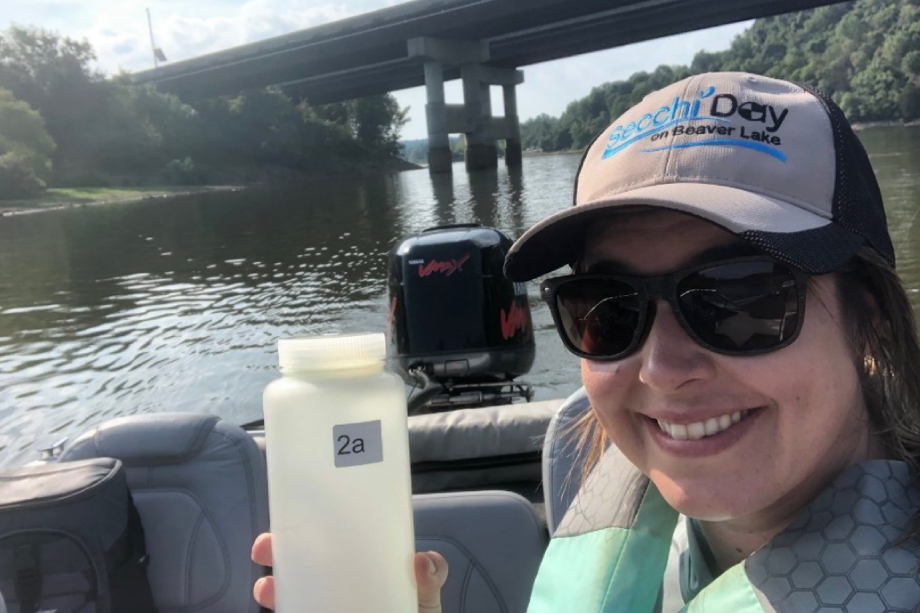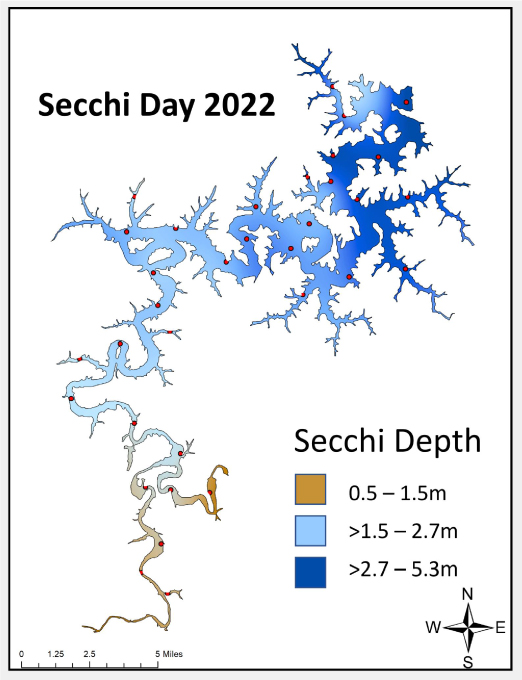
Beaver Water District’s professional laboratory staff have completed the analysis of collected water samples from the District’s 17th Annual Secchi Day on Beaver Lake. The event was held August 20, 2022, with the help of dedicated volunteers.
Secchi Day is named for the Secchi disk, a black and white device lowered into the water to measure transparency. The task of sampling teams is to take Secchi disk readings to determine water transparency and collect water samples. The samples are then tested by the Beaver Water District (BWD) lab staff for chlorophyll-a, total phosphorus, and total nitrogen to determine algal density and nutrient concentration. Secchi depth is a measure of water transparency that involves lowering a black and white disk into the water and recording the maximum depth in which the alternating black and white pattern can be distinguished from above the water’s surface.
Matthew Rich, Environmental Specialist with BWD, spoke about results and data from Secchi Day with the BWD’s Board of Directors at their monthly meeting held on November 17th.

“This year, we had 33 sampling teams collecting Secchi depth data and water quality samples at 35 sites in Beaver Lake,” Rich said. “Each site was duplicated by different Citizen Scientist teams, so it gives us great confidence that Secchi measurements are being accurately collected. With this year’s data, we see that chlorophyll-a (a bioindicator of algae) was elevated in the War Eagle Creek and White River sections of the lake, when compared to some previous years’ data. In addition, Secchi depth measurements this year were greater than historical averages at the other end of the lake near Beaver Dam.
This pattern of higher nutrients and chlorophyll-a in the headwaters section, coupled with deeper clarity measurements at the dam can be attributed to decreased rainfall in the watershed in the months leading up to Secchi Day. Without that steady supply of water from the inflow streams flushing sediment and nutrients down-lake” Rich added, “conditions were prime for having hot spots of algal activity in the headwaters. Despite these results, long-term averages of Secchi Day data indicate that the high level of water quality in Beaver Lake is being maintained.”
To read this year’s Secchi Day report, go to the Secchi Day Data page and the report will be in the middle of the page.
